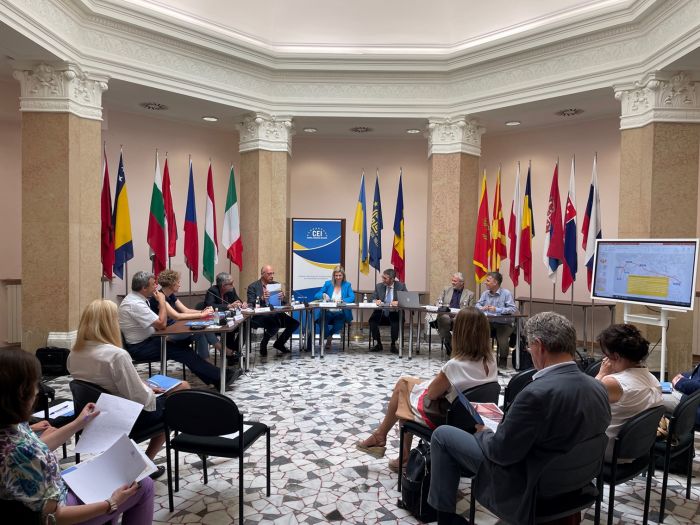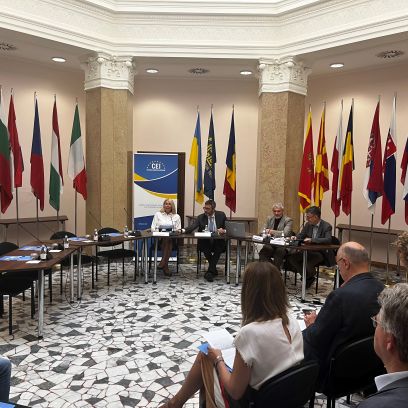Analysing the potential transport demand for planning a direct train service linking Trieste Centrale to Rijeka (HR) was the focus of the gathering held at the CEI-Executive Secretariat (CEI-ES) premises on 26 June.
The public event opened by Deputy Secretary General Zsuzsanna Kiràly, aimed to analyse the potential transport demand for planning a direct train service connecting Trieste Centrale with Rijeka (HR). Professors Pesenti and Stocchetti from Ca Foscari University in Venice presented the outcomes of studies conducted along the cross-border route IT-SI-HR. The studies estimated an average number of passengers between 28,400 and 36,000 per year, identifying opportunities for promoting the train service, such as the increasing demand for cycling tourism in the area. The absence of a current direct train connection along this route highlighted the potential for additional demand with the introduction of the service itself.
Paolo Dileno, CEI-ES project manager, mentioned the successful experimental cross-border rail connections in the IT-AT-SI region. Thanks to the Interreg CE SUSTANCE project, a new direct experimental train service between Trieste, Villa Opicina and Rijeka will be tested in the summer of 2024, facilitated by fruitful cooperation between Slovenian Railways and Croatian Railways.
The round table discussion brought together experts and stakeholders from the Friuli Venezia Giulia Region (Mr. Enzo Volponi), University of Trieste (Mr. Lorenzo Castelli), Trenitalia (Ms. Elisa Nannetti), and the Italian Ministry of Infrastructure and Transport (Mr. Carlo Zijno). They discussed the opportunities for better linking the cross-border region between northeast Italy, western Slovenia, and the Istria region. The discussion covered existing opportunities such as cycling tourism and various cultural attractions along the route, as well as potential threats including competition with private mobility options. Additionally, a preliminary discussion was held regarding the rehabilitation of international passenger train connectivity along part of the TEN-T Western Balkans corridor (Trieste - Ljubljana - Zagreb – Belgrade).
Cristina Amirante, the regional Minister for Infrastructure and Territory, concluded the event by emphasizing how a new direct transport service could generate additional demand, particularly in peripheral and cross-border regions. She also highlighted the importance of integrated services, including the availability of last-mile connections at transport nodes.
This event received funding from the Friuli Venezia Giulia region as part of the Joint Operational Plan CEI-ES/RFVG 2022-2023.
For more info: dileno@cei.int.


